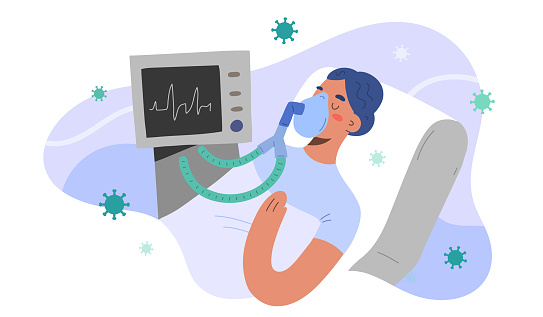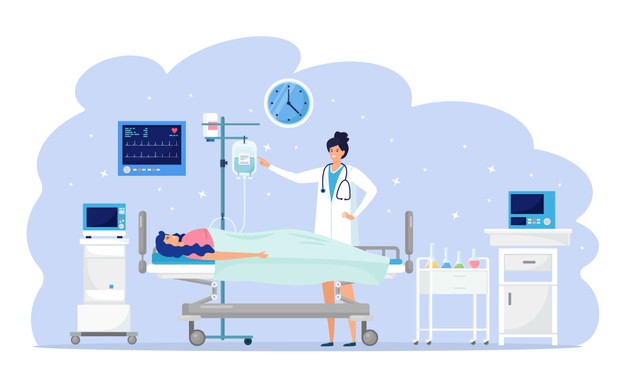Medication for asthma
The two types of medications used to treat asthma are control medications and relief medications.

The goal of asthma treatment is to achieve good control of asthma symptoms and to maintain normal activity levels while minimizing the risk of acute exacerbations, irreversible impairment of lung function, and drug-related adverse effects. With appropriate treatment and management, the vast majority of patients with asthma are able to achieve this goal.
Medications used to treat asthma can be divided into controller and reliever medications:
(1) Control medications: medications that require daily use and prolonged maintenance. These medications maintain clinical control of asthma mainly through anti-inflammatory effects, and include inhaled glucocorticoids, systemic hormones, leukotriene modulators, long-acting β2-agonists, and sodium cromoglycate.
(2) Relief drugs: Also known as emergency drugs, these drugs are used on demand when symptoms are present and relieve asthma symptoms by rapidly relieving bronchospasm, including fast-acting inhaled and short-acting oral β2-agonists, systemic hormones, inhaled anticholinergic drugs, short-acting theophylline, etc.
Glucocorticoids: Glucocorticoids are currently the most effective drugs to control airway inflammation in asthma. Chronic persistent asthma is mainly administered by inhalation and oral routes, with inhalation being the preferred route. Common drugs include beclomethasone propionate aerosol, budesonide aerosol, fluticasone propionate aerosol, and mometasone furoate aerosol, etc. Adverse effects of glucocorticoids in the oropharynx include hoarseness, pharyngeal discomfort and possible Candida infection. After inhalation, the oropharynx should be rinsed with water in a timely manner, and the above-mentioned adverse reactions can be reduced by choosing dry powder inhalers or adding a nebulizer.
β2-agonists: β2-agonists can be divided into short-acting (maintenance time of 4-6 hours) and long-acting (maintenance time of 10-12 hours) β2-agonists.
(1) Short-acting β2-agonists are common drugs such as salbutamol, terbutaline, etc. Short-acting β2-agonists can rapidly relieve bronchospasm, usually within minutes, and their efficacy can be maintained for several hours. They are the drugs of choice for relieving the acute symptoms of mild to moderate asthma, and can also be used to prevent exercise asthma. These drugs should be used on an as-needed basis and should not be used in long-term, single, overdose applications.
(2) Long-acting β2-agonists commonly include salmeterol, formoterol, procaterol, etc. Long-acting β2-agonists can be effective continuously, but the onset of action is slow. Long-term use of long-acting β2-agonists alone has an increased risk of asthma death, and long-term use of long-acting β2-agonists alone is not recommended.
Combination of glucocorticoids and long-acting β2-agonists: The combination of glucocorticoids and long-acting β2-agonists has synergistic anti-inflammatory and asthma calming effects. The commonly used combination formulations in clinical practice are budesonide/formoterol dry powder, fluticasone/salmeterol dry powder and beclomethasone/formoterol aerosol. Combination formulations increase patient compliance, reduce the adverse effects of high-dose glucocorticoids, and are particularly suitable for the long-term treatment of patients with moderate to severe asthma.
Leukotriene modulators:Leukotriene modulators are the only long-term controlled drugs other than glucocorticoids that can be used alone. Common drugs such as montelukast sodium can be used as alternative treatment drugs for mild asthma and combination drugs for moderate to severe asthma. This class of drugs is particularly indicated for exercising asthma and aspirin-induced asthma.
Theophylline:Theophylline drugs are often used as aminophylline and doxorubicin, etc. The use of theophylline drugs can prevent asthma attacks and reduce nocturnal attacks. Adverse effects of theophylline include nausea and vomiting, arrhythmia polyuria, etc. Individual differences are large, and blood concentration monitoring should be performed to ensure the safety of medication.
Anticholinergic drugs:The common anticholinergic drugs are the short-acting anticholinergic drug ipratropium bromide and the long-acting anticholinergic drug tiotropium bromide. These drugs should be used with caution in women in early pregnancy and in patients with glaucoma and prostatic hypertrophy.
Anti-lgE therapy:The commonly used anti-lgE monoclonal antibody is omalizumab, which can significantly improve the symptoms, lung function and quality of life of patients with severe asthma, reduce the use of oral hormones and emergency medication, reduce the rate of severe acute asthma attacks, reduce the rate of hospitalization, and has a good safety and tolerability. However, omalizumab can cross the placental barrier and it is uncertain whether there is potential harm to the fetus and should not be used during pregnancy unless truly necessary.
Allergen-specific immunotherapy:Subcutaneous injection of extracts of common inhaled allergens (e.g., dust mites) may reduce asthma symptoms and airway hyperresponsiveness. This therapy is indicated for patients with well-defined allergens and poorly controlled asthma despite strict environmental control and pharmacologic therapy.
Other drugs:Second-generation antihistamines such as loratadine, azelastine, and other oral anti-allergic drugs have a weaker role in asthma treatment and are mainly used in asthma patients with allergic rhinitis.
At present, asthma is a chronic disease that cannot be cured, regardless of the treatment used, and it is expected that continuous medical advances will lead to a cure in the future.






